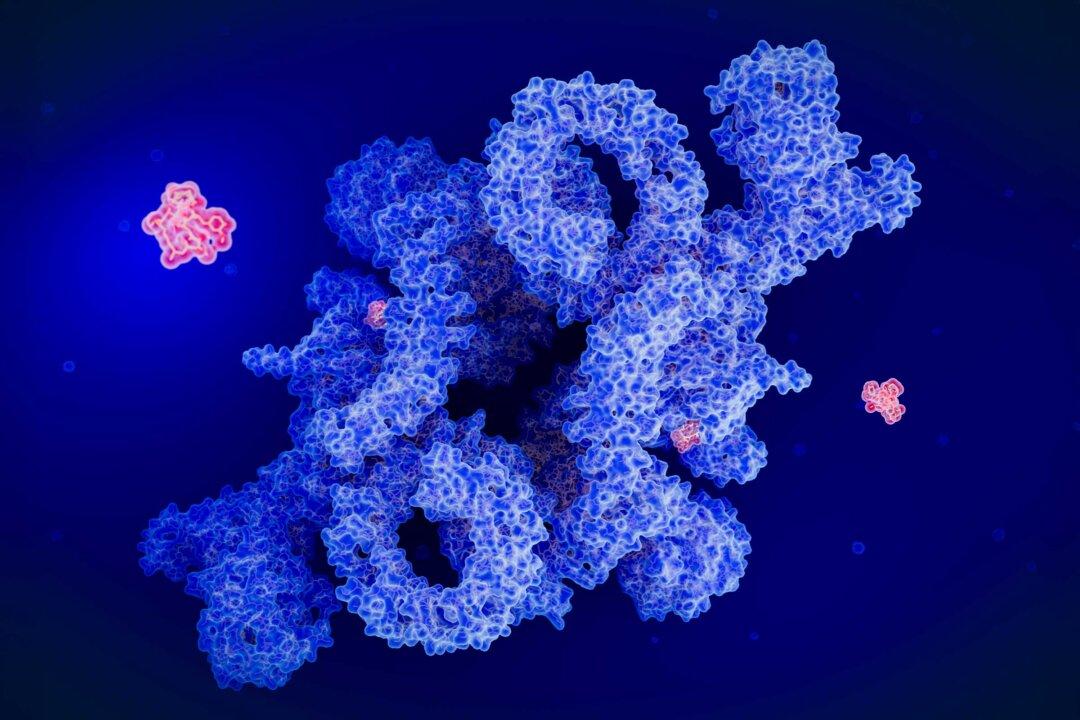Imagine a room full of your closest friends and family. The odds are that heart disease will affect at least one of them. Heart disease is the leading cause of death for both men and women in the United States, claiming a life every 33 seconds. For decades, we have been told that lowering low-density liproprotein (LDL) cholesterol—so-called bad cholesterol—is the key to heart health. But with odds like that, something isn’t adding up.
Beyond LDL
You might have had your cholesterol checked and been told that everything looks normal. But those standard tests may only be telling part of the story. Traditional cholesterol tests, while still valuable, measure cholesterol amounts.They miss important details about the quality and behavior of cholesterol particles and other key metabolic factors. This is why a “normal” cholesterol level isn’t always a guarantee of low risk. To understand your risk, you may need to dig deeper with advanced lipid testing.
Metabolic Health and Heart Disease
Think of your body’s metabolic health as the engine of a car. When it’s running smoothly, you feel energetic and well.But imagine feeling constantly tired, noticing your clothes are tighter around the middle, and struggling to keep your blood sugar in check. Now the engine isn’t running as well. These symptoms could be signs of metabolic syndrome—a cluster of health issues that increase your risk of heart disease. Metabolic syndrome is like having several warning lights flashing on your dashboard: belly fat, high triglycerides, low HDL cholesterol, high blood pressure, and high blood sugar.
The issues associated with metabolic syndrome are often connected, with insulin resistance frequently being the root cause. High triglycerides—often a consequence of a high-carbohydrate diet—and elevated glucose levels are strong indicators of insulin resistance. Reduced insulin sensitivity can develop years before it shows up on standard blood tests.
The A1C test measures your average blood sugar levels over the past three months, providing your physician with a useful indicator of how well your blood glucose levels have been controlled over time. The results help assess your risk for diabetes or manage an existing metabolic condition such as diabetes.
“Insulin resistance happens 10 to 20 years before A1c is ever elevated [and] the body will do everything to correct itself until it can’t,” Shannon Davis, a registered dietitian and metabolic health specialist, told The Epoch Times via email.
Insulin helps your body use blood sugar for energy. When you’re insulin resistant, your cells don’t respond properly to insulin, leading to high blood sugar and a cascade of other metabolic problems. Together, these problems can significantly increase your risk of heart disease, stroke, and other serious cardiovascular events.
Cholesterol and Its Carriers
Cholesterol is a fat-associated substance essential for building healthy cells and producing vital hormones such as vitamin D. It’s not inherently bad. Your liver produces most of the cholesterol circulating in your body. The real issue lies in how cholesterol is transported.“Your liver makes most of the cholesterol that’s circulating around, and your body’s pretty good at maintaining a homeostasis,“ Norwitz said. ”So if you eat more cholesterol, your liver makes less. If you eat less cholesterol, your liver makes more.”
Since cholesterol doesn’t dissolve in blood, it’s transported by lipoproteins, which resemble tiny “delivery buses” on the highway of your bloodstream. LDL primarily carries cholesterol to cells, and excess LDL—especially small, dense particles—can contribute to plaque buildup. HDL helps remove excess cholesterol from the bloodstream and returns it to the liver. In short, cholesterol is the cargo, and LDL and HDL are the vehicles that transport the cargo.
According to Davis, the issue isn’t cholesterol, but rather how its carriers, lipoproteins such as LDL and HDL, behave in the body.
LDL gets its reputation as bad cholesterol because excess amounts can contribute to plaque buildup in the arteries. These smaller particles are more likely to damage the artery wall and cause inflammation. Davis compared them to tiny buses that zip in and out of traffic, increasing the chance of crashes. These “crashes” represent inflammation, which can lead to “traffic jams” or plaque accumulation.
Conversely, larger, “fluffy” LDL particles are less likely to cause problems. HDL helps clear excess cholesterol from the bloodstream and transport it back to the liver for disposal, reducing the risk of buildup.
Complex Landscape
For years, we’ve been told that lowering LDL cholesterol is the primary way to protect our hearts, but the reality is more nuanced. While elevated LDL can contribute to risk, its impact is conditional, as it’s inextricably linked to overall metabolic health and other factors.One factor is the amount of apolipoprotein B (ApoB) in your blood, a protein that transports cholesterol and other fats. This can be measured with the ApoB test.
“The risk associated with ApoB and LDL counts is context-dependent,” Norwitz said.
Lipids and Lipoproteins
Lipoproteins transport cholesterol through the bloodstream, and their characteristics—such as size, density, and function—can significantly influence heart disease risk.Metabolic Factors
Metabolic health plays a central role in cardiovascular risk. Factors such as blood sugar regulation and dietary choices can directly influence how the body handles cholesterol and inflammation.Other Influences
Beyond blood markers and diet, long-term exposure and lifestyle habits also shape heart health. Preventive strategies and daily behaviors can either increase or reduce cardiovascular risk over time.Advanced Cardiovascular Testing
Let’s say you’re concerned about your heart health. You visit your doctor, and he performs a standard cholesterol test. Your results come back normal—but you still have some nagging concerns. What if there’s more to the story?Lipid Markers
LDL particle number: This may be a better predictor of risk than traditional LDL cholesterol, particularly in people with diabetes or metabolic syndrome.According to Norwitz, if you have lower triglycerides—less than 100 milligrams per deciliter (mg/dl)—and higher HDL cholesterol—more than 50 mg/dl—it is generally a sign of better metabolic health.
Metabolic and Inflammatory Markers
In addition to cholesterol-related markers, tests that assess blood sugar regulation and inflammation can offer deeper insights into your overall cardiovascular risk.Lifestyle Approaches to Heart Health
Your lifestyle plays a powerful role in your heart health. While genetics contribute, the choices you make every day—such as what you eat and how active you are—have a profound effect. Making significant lifestyle changes can seem daunting, but even small, consistent steps, when combined over time, can make a big difference.The heart is a muscle, and like any muscle, it thrives on regular exercise. While exercise is often associated with weight loss, its cardiovascular benefits extend beyond calorie expenditure. Combating sedentary behavior is also crucial, as prolonged inactivity significantly increases risk. Regardless of your overall physical activity levels, more sitting time is linked to a higher risk of heart disease.
Both aerobic exercise and resistance training are important for heart health. Aerobic exercise improves cardiovascular fitness, while resistance training builds muscle mass.
“The more muscle we have, the better our glucose will be controlled and the more insulin sensitive we will be,” Davis said.
While exercise is critical, diet plays an even more significant role in cardiovascular health. Dietary recommendations for heart health are still debated within the medical community, but research continues to grow.
“I think more doctors need to understand the dangers [of] recommending a low-fat diet high in carbohydrates and ... vegetable oils while placing people on a statin,” Davis said, referring to cholesterol-lowering prescription drugs.
She recommended a low-carbohydrate approach that emphasizes fiber, healthy fats, and animal protein, combined with intermittent fasting, to improve metabolic health. Intermittent fasting involves cycling between periods of eating and not eating, typically fasting overnight and into the next morning.
The impact of dietary cholesterol is also less significant than previously believed.
“Dietary cholesterol does not increase serum cholesterol in most people,” Norwitz said.
He noted that for most people, dietary cholesterol—such as that found in egg yolks—has little effect on blood cholesterol levels. He said he would choose eggs over oatmeal with bananas for better metabolic and heart health, especially in the context of Type 2 diabetes or metabolic syndrome.
Focusing solely on LDL cholesterol is not sufficient. A more comprehensive assessment of cardiovascular risk includes reviewing family history and additional blood markers. Norwitz suggested evaluating indicators such as HbA1c, insulin resistance, high-sensitivity C-reactive protein, triglycerides, and HDL cholesterol to better understand metabolic health and cardiovascular risk.
“It really is individual-dependent,” Norwitz said.
Tracking these metrics allows you to monitor the effectiveness of your lifestyle changes and make adjustments as needed. The key is to use this information to take charge of your heart health.







